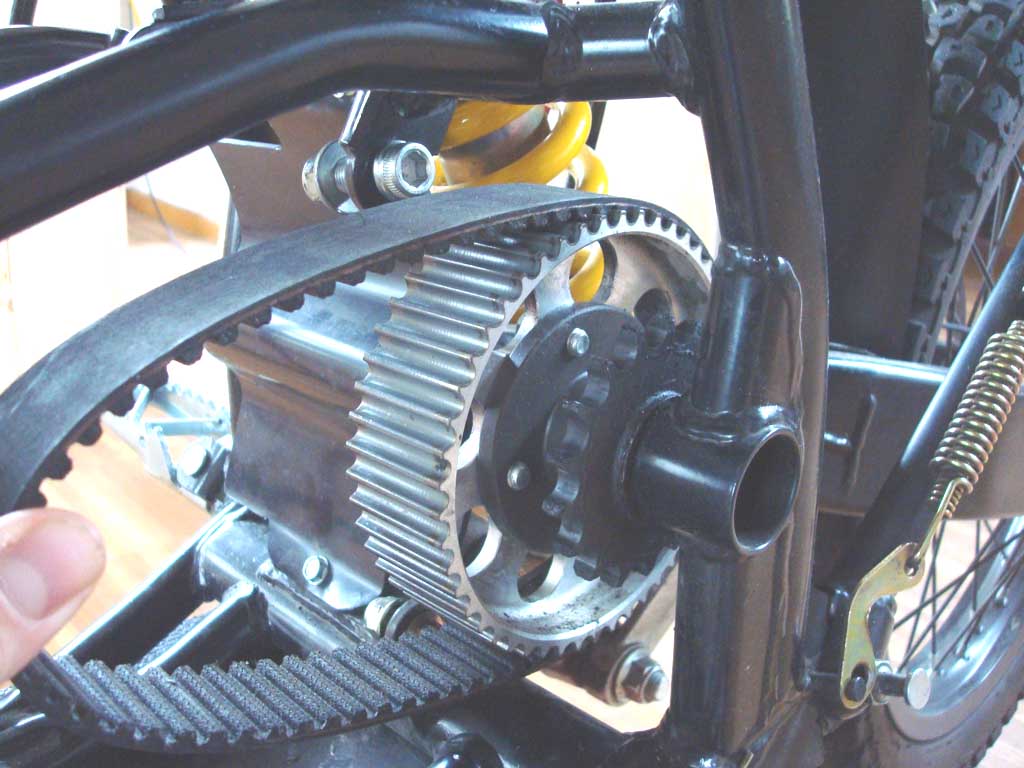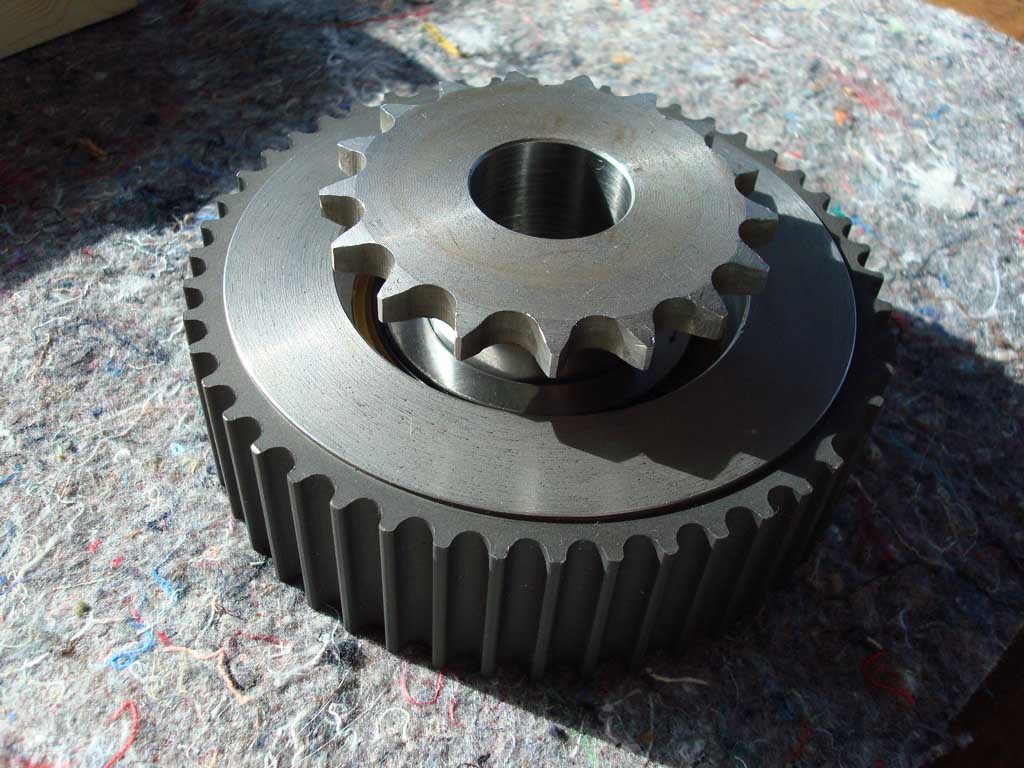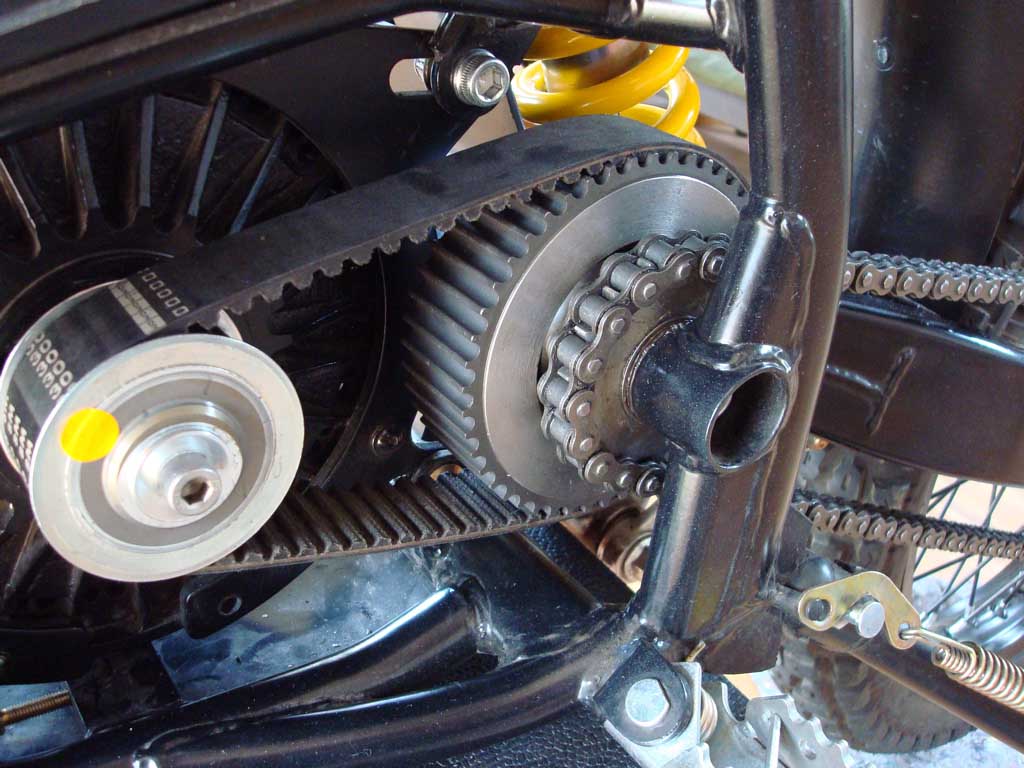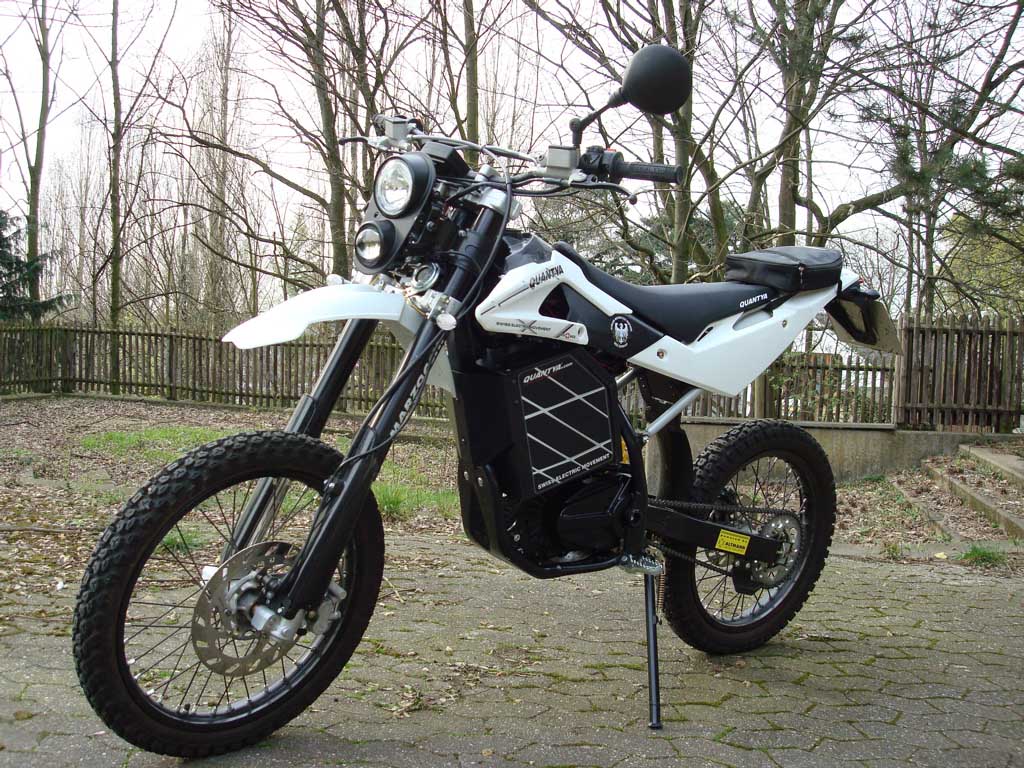
A Freewheel Clutch for the Quantya Electric Motorcycle - Increases Mileage up to 30%
The mileage of electric motorcycles has improved since the advent of light-weight, high-capacity batteries.
However mileage with electric vehicles is one of the things that you cannot get enough of.
It is like piston displacement, or horsepower. You cannot replace horsepower ... except with more horsepower.
The same is true about mileage.
With electric vehicles we can apply high-tech electronics in order to create regenerative braking.
This seems a good idea: You have to brake sometimes, so why not feed the energy (normally lost as heat in the mechanical brakes) back to the battery in order to increase mileage.
Yes, the idea sounds good at least in theory, however the actual implementation can be quite complex and the benefit seems to be much less of what would be expected. The reasons for the limited mileage-increase gained by regenerative braking are several.
First there is a chain of losses: from the battery to the controller to the motor to the rear wheel to the street, back to the rear wheel, back to the motor, back to the controller, back to the battery.
With each step you loose some energy (as heat).
Second, the batteries we have right now have a higher discharge rate, compared to the charge rate. This is another limiting factor. Think about how fast you can accelerate your bike and how fast you can brake it (with mechanical braking).
You will come to the conclusion that the braking deceleration is normally higher than the vehicles accerleration. But you cannot feed this high current back to the controller and back to the battery, so you can only use regenerative braking in a 'soft' braking mode.
I have read that regenerative braking in trains gives a max. benefit of 15%. This is a high value, because the train has high mass, low speed (low speed/mass ratio) and soft braking. Also it does not feed back into a battery but directly into the power-grid.
So it is very unlikely that you get 15% energy back using regenerative braking with an electric vehicle in normal traffic. You may get 5%.
... would be to improve the coasting capability of your vehicle.
Most electric bikes employ a DC brushed motor (Lynch Agni, LEMCO, Perm, Etek) which drives a chain which in turn drives the rear wheel. When you are riding with 30mph and close the throttle, the rear wheel will drive the motor through the chain, however the motor will slowly brake down your speed.
I have realized on the Quantya bike (it is the same with many other electric bikes) that if you go on a street down-hill and need to maintain 30mph in order to flow in traffic, the motor will pull about 30 Amps ... downhill !!!
Now... downhill should be for free, but if you close throttle your speed will come down to 6 or 7 mph downhill, so you must pull throttle in order to stay in traffic.
I consider this is a stupid waste of precious battery capacity.
That was the reason I constructed a freewheel clutch. The motor can drive the rear wheel, but the rear-wheel will not drive the motor, so you are able to coast much more effectively, comparable to a bicycle.
How is it done ?
The Quanty electric bike has an intermediate shaft located in the rear fork. The motor drives the intermediate shaft via belt drive. The sprocket is attached to the belt-wheel and drives the rear wheel via chain.

I thought that if I could replace the fixed connection between the belt-wheel and the sprocket with a ball-bearing-clutch, then the motor could turn the sprocket, but the sprocket would not turn the motor ... at least in one direction.
I found a company called GMN who make high quality ball bearing clutches. I am using the biggest clutch in their catalog called FK 6208-2RS, which is sealed on both sides and is good for 350 Nm or torque :)
The result looks like this:

The massive ball-bearing-clutch is pressed into the belt wheel.
The sprocket is pressed into the bearing clutch from the other side:

The belt-wheel and the sprocket were ordered from Maedler. You need a hydraulic press to fit the parts.
See below the complete installation:

Motor turns belt-wheel and sprocket via clutch-bearing (drive-mode). However if sprocket moves faster than belt-wheel (coast-mode) it will run free and not turn the motor.
Very good.
On my first test-ride I was able to obtain a mileage increase of about 25% with one battery charge.
I think more than 30% are not very probable but I consider 25% more range very good ... perhaps better than regen will ever do.
The increase in mileage depends on the terrain and how you ride the bike. However I think it is almost impossible not to gain at least 5%.

One last thing:
If you still manage to drain your battery way out, the freewheel clutch will make it much easier to push your bike home, LOL :-)
Fun ...
ALTMANN MICRO MACHINES ... Dipl.-Ing. Charles Altmann ... Erlenstr. 15 ...42697 Solingen ...Germany
phone +49-212-233-7039 ... email